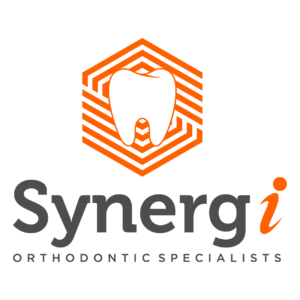This article, written by Dr. Vanessa Peterson, was originally published in OrthoTown Magazine in September 2022.
Patient communication is key to building trust throughout each person’s unique treatment plan. With the rapid change in communication, it’s increasingly important to practice positive patient communication to build confidence, increase rapport and cooperation and minimize misunderstanding. In this article, I’ll dive into tips for improving clear aligner patient compliance and trust through education, expectations and more.
Educating patients at the initial examination
First, I tell clear aligner patients that the outcome of their treatment depends on both my expertise in treatment planning and their compliance in wearing the trays.
At the initial examination, I show patients what attachments look like and explain that they’ll have tooth-colored “bubbles” on some of their teeth. I typically see a lot of pushback involving attachments on the front top teeth; if a patient seems particularly reluctant about them, I’ll explain their purpose in greater detail. Extrusive movements can be great examples here, because patients understand the tray can’t pull a tooth down without something to grip on. This helps to avoid unhappy patients the day clear aligners are delivered.
I tell patients wearing clear aligners involves a lifestyle change. We call clear aligners “snack inhibitors” for a reason, and I tell patients if they usually sip on beverages like tea, coffee or energy drinks all day, this habit will need to change temporarily. We also discuss what it would be like at social situations involving extended times of eating and drinking. Most patients love the idea that clear aligners will help them stop snacking, but avid coffee drinkers or teenagers who snack frequently may opt for braces after this conversation.
Some patients who think “no pain, no gain” might try to accelerate their aligner progression—or skip a tray entirely—if they don’t feel pressure while wearing a tray. I explain how some aligners may feel tighter while others feel relatively loose, but we’re addressing different movements in different stages and each tray serves a purpose. I also explain the biology of tooth movement, and how there’s a process of movement and a lag phase where the bone is being removed and replaced. When the trays don’t feel as tight, the bone is catching up to the new tooth position, which is still an important step in the treatment process.
When I use distalization as a sagittal correction technique, I tell patients they’ll feel space opening between the back teeth and it will likely be annoying to get food stuck there when they’re eating, but this is only a temporary problem and means their treatment is going as planned.
When closing large spaces, I often tip the roots toward each other. This causes the crowns to splay before the crowns of the teeth come together, so I make sure to tell patients their space may look worse before it gets better.
Setting realistic expectations
One thing I see consistently among clear aligner brand recommendations is that patients wear their aligners 22 hours a day—in other words, all the time except when they’re eating, drinking or brushing their teeth. That seems like a tall order—and anecdotally, I know most patients wear their aligners less and still get excellent results. Psychologically, if some people know they won’t make the mark, they don’t even try.
I believe if you set a more attainable minimum standard, more patients will be motivated to achieve it. So I tell patients they need to wear their aligners at least 18 hours per day, with a goal to hit 20 hours. I don’t believe I’m lowering the standard for everyone, because I believe patients can receive the same result in 18 hours they could in 22.
I also tell patients if they aren’t hitting 18–20 hours, their treatment is going to take longer because they’ll likely need to wear the trays for 10–14 days each. Patients usually appreciate the upfront education and having a treatment modality that has some flex with their lifestyle. It’s very important to educate patients about tracking issues, because this helps prevent inefficiencies, refinements and increased treatment time.
Over the years, I’ve found most patients in aligner treatment do very well the first year, and then compliance sometimes wanes. I explain at the initial examination that if their treatment time will take more than 12 months, this requires commitment on their part even if they get to a point where they may “hit the wall” with aligner compliance.
Giving the patient accountability
We show patients various photos of trays not seating on single teeth or groups of teeth and I explain that some movements—especially extrusive movements—can’t happen if a tray isn’t gripping onto an attachment. I further explain how if an attachment isn’t being gripped but the patient still moves forward in the trays, they’re actually adding treatment time to their plan. If a patient can’t get a tray to grip an attachment after wearing the tray for additional time or using a chewie, I ask them to proactively make an appointment.
We ask patients to self-monitor, and if the appointment interval is longer than eight weeks, we have a recall code that reminds us they should email us a selfie photo with their trays in. (You could also use a remote patient monitoring system such as Grin.)
Asking the patient to send a photo and self-monitor can increase patient accountability, and I think directs them to pay more attention to treatment.
Tips for discomfort
I recommend patients switch to their next tray at nighttime before they go to sleep. Sometimes the first few hours of a new tray can be uncomfortable, and I believe it’s nice to get this period of time over while you sleep. Every tip for decreasing discomfort leads to a happier and more satisfied patient.
When using two materials—3M Flex and 3M Force with 3M Clarity Aligners, for example—there is a transition in which the trays will feel different to the patient. I tell them the 3M Force material feels tighter/stiffer. It’s important to educate them how the different materials serve different purposes, and thus they’re entering a different stage of treatment. Patients usually associate this positively as progress!
Similarly, I explain that virtual space closure happens at the end of treatment—there are several overcorrection trays meant to close any remaining space. If the patient’s space has already closed, I tell them sometimes the last tray or two may feel too tight or they may not even be able to get it on. This simply means that their space closure is complete, and they can stay on the last tray they can get on.
Motivating patients
- I pull up the 3M Oral Care Portal and show patients their treatment design at every appointment. This seems to be very motivating and helps patients understand what changes to expect over the next appointment interval. Sometimes we email the treatment design to patients so they can follow along with treatment. Patients get amnesia quickly! Halfway through treatment, they forget what their teeth looked like when they started. Show them initial photos, or do a 3D scan overlay showing initial and final tooth positions, to get them excited about their progress and feeling thankful they made the decision to correct their teeth with aligners.
- Tell patients about the fees for lost aligners or switching to braces. Even though we as orthodontists are compassionate and love to give things away for free, patients value things they pay for. I believe in being compassionate … but also in holding patients accountable for their role in treatment success.
- In complex cases that require interproximal reduction, many attachments and elastics, I try not to overwhelm patients and will delay starting elastics until the second appointment.
- Practice placing and removing aligners with the patient—give them an aligner removal tool if needed and tell them this gets easier with practice. You’d be surprised how many people panic when they have trouble removing the tray the first time they try!
- Do your best to keep your word. Stick to your estimated treatment time with efficient treatment planning and effective appointments.
- Spend time adjusting staging and making space, adding appropriate attachments, and overcorrecting. I love using a checklist!
- Use a UV light to check for flash around attachments. Having accurate attachments helps ensure teeth track as planned.
- Floss contacts at every appointment, and perform IPR as needed to ensure predictable tooth movement.
Treat your patients like family
Our society craves connection. Many people choose clear aligner treatment to better their self-confidence, which in turn improves their social connection. Make this happen in the orthodontic clinic! Patients trust kind people and people they have a connection with.
Great doctor-patient communication and a friendly orthodontic team will go a long way toward creating a happy, trusting patient.

